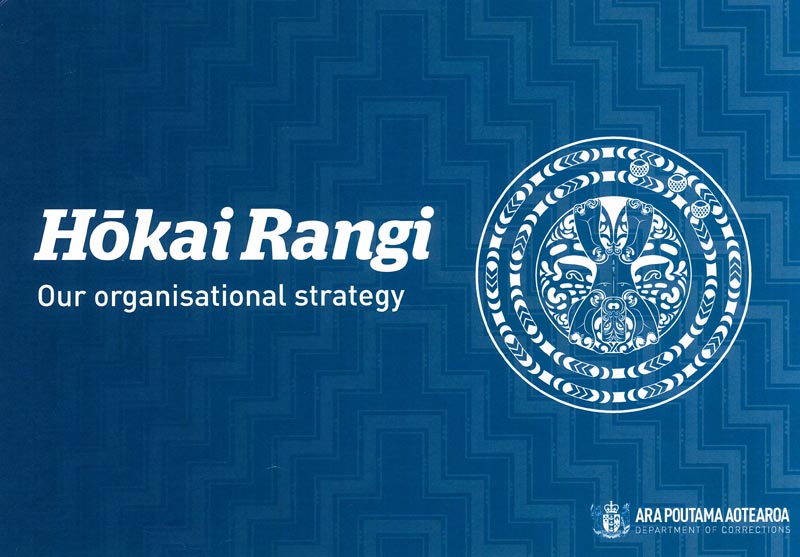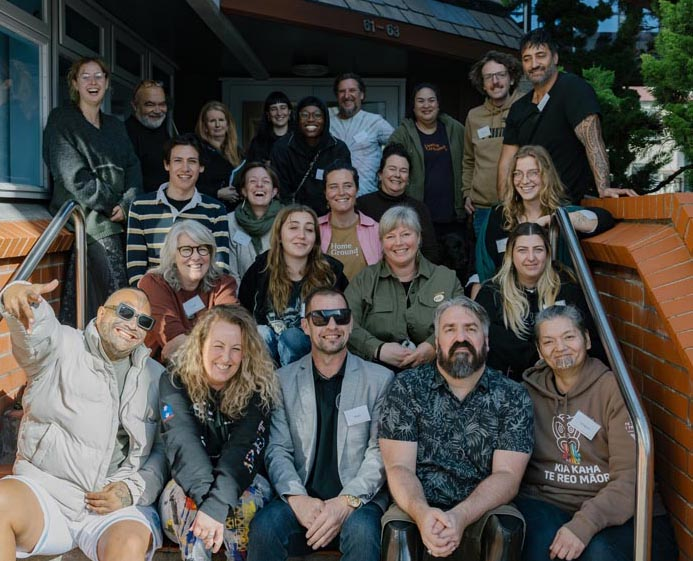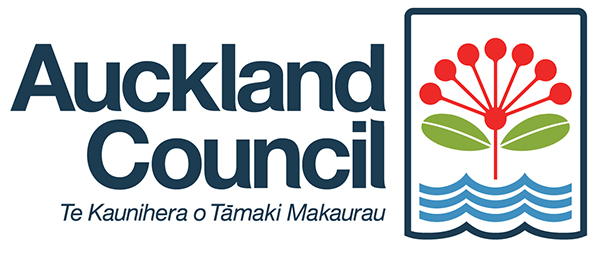A practical guide aimed at artists and educators interested in delivering arts programmes in prisons is receiving positive feedback in New Zealand and overseas.
%20sm.jpg) Te Ara ki Runga The Path Up was published by Arts Access Aotearoa in early 2025. Neil Wallace, its Arts in Corrections Advisor, says: “There’s nothing like this on the planet. This is a first. It was co-designed by the Arts in Corrections sector for the sector, and in consultations with Corrections officers and educators all over the country.”
Te Ara ki Runga The Path Up was published by Arts Access Aotearoa in early 2025. Neil Wallace, its Arts in Corrections Advisor, says: “There’s nothing like this on the planet. This is a first. It was co-designed by the Arts in Corrections sector for the sector, and in consultations with Corrections officers and educators all over the country.”
Neil (Ngāti Irakehu, Kāti Kuri of Ngai Tahu) says the support of the Arts in Corrections community was integral to the writing of the guide and to its success.
“Feedback so far has been very positive and well-received by local and international experts in psychology, art therapy and prison education,” he says.
Professor Helen Farley, Director of Criminal Justice, University of Canterbury, says the guide covers a lot of topics that are highly relevant for anyone working in or entering the Arts in Corrections space.
"It treads that fine line between being informative and being overwhelming, providing a wealth of practical, grounded advice while remaining accessible and engaging," she says. "I particularly appreciate how it weaves together policy context, real-world examples, and the voices of those with lived experience.
"Arts in Corrections advisor Neil Wallace’s course brings the content to life with kōrero and generous sharing, helping practitioners understand not just what to do but why it matters. Te Ara ki Runga is an invaluable resource that will support meaningful, safe and transformative arts practice in prisons across Aotearoa and beyond."
Dr Amanda Gardner, an American authority and writer in the field of arts in criminal justice and corrections facilities, will be visiting Wellington in July and meeting with Neil. She is the co-editor, with Dr Laura Caulfield, of Arts in Criminal Justice and Corrections: International Perspective on Methods, Journey, and Challenges (Routledge).
 “It would be tempting to pick up Te Ara ki Runga, and simply appreciate its vibrant, full-page depictions of prisoner art but that would be a mistake,” Dr Gardner says. “The publication provides a sensitive and thorough roadmap for aspiring and practising Arts in Corrections educators.
“It would be tempting to pick up Te Ara ki Runga, and simply appreciate its vibrant, full-page depictions of prisoner art but that would be a mistake,” Dr Gardner says. “The publication provides a sensitive and thorough roadmap for aspiring and practising Arts in Corrections educators.
“It uses clear language to describe complicated and often intuitive subjects such as vulnerability and cultural competence. It provides not only insights into the value of arts programmes in correctional settings but also the value of the arts and arts programmes in general.”
Professor Sylvie Frigon from the University of Ottawa describes the guide as a “game-changer” for the delivery of sustainable art programmes in prison. “Once again, New Zealand is at the forefront of innovation and thoughtful artistic engagement in corrections spaces.”
Structured across six chapters, Te Ara ki Runga guides readers through every stage of the Arts in Corrections journey. It covers a range of topics from understanding the national Arts in Corrections Network and its kaupapa to best practice, and designing programmes and measuring outcomes. There are also practical tips, reflective prompts, profiles and expert insights.
Ara Poutama Aotearoa’s Hōkai Rangi Strategy
The final chapter includes further resources, research findings and a glossary of te reo Māori terms. It also provides guidance on how arts programmes can support Ara Poutama Aotearoa Department of Corrections’ Hōkai Rangi Strategy.
 “Te Ara ki Runga was written specifically to align with the Hōkai Rangi Strategy and its focus on wellbeing, identity and connection,” Neil explains.
“Te Ara ki Runga was written specifically to align with the Hōkai Rangi Strategy and its focus on wellbeing, identity and connection,” Neil explains.
Key topics include trauma-informed practice, cultural competency and the importance of collaboration with whānau, iwi, community organisations and Corrections staff.
The guide features profiles of musician and experienced educator Annah Mac; the Home Ground collective and its work with women in the justice system; Te Kāhui creative writing programme; and crochet artists Lissy and Rudi Robinson-Cole.
The Learning Connexion offers Insights into the importance of record-keeping, confidentiality and self-review. And Hone Fletcher, Mark Lang, Jesse Maclean and Christine Harvey discuss cultural competency and why it matters.
Educator self-care and wellbeing
Te Ara ki Runga acknowledges the emotional toll of this type of work and dedicates space to educator self-care and wellbeing, resilience, and the importance of supervision and debriefing.
 To support the implementation of the guide, Neil has developed a course for Arts in Corrections educators. It’s a ten-week programme that introduces new and prospective arts programme facilitators to the guide’s content and its application in real-world settings.
To support the implementation of the guide, Neil has developed a course for Arts in Corrections educators. It’s a ten-week programme that introduces new and prospective arts programme facilitators to the guide’s content and its application in real-world settings.
The course covers topics such as lesson planning, goal setting, relationship-building within the prison system, and outcome measurement.
“This isn’t a certificate course,” says Neil, a former tertiary lecturer currently undertaking a masters degree in design. “It’s a foundational programme that equips people with the tools, language and confidence to develop arts programmes in a culturally safe, collaborative and informed way.”
Te Ara ki Runga The Path Up was written and published with funding through Manatū Taonga’s Regeneration Fund.
The guide is available to artists, educators and organisations involved in Arts in Corrections work throughout New Zealand. For more information, please contact Neil Wallace (E: neil.wallace@artsaccess.org.nz T: 04 802 4349).



